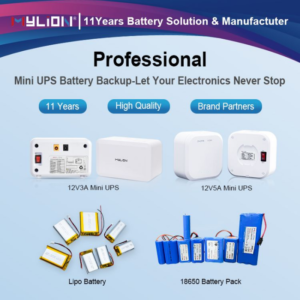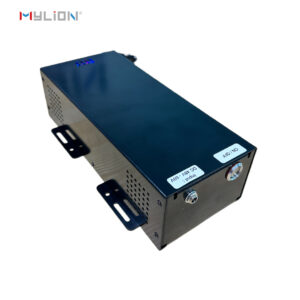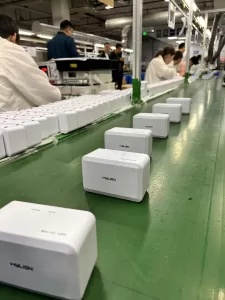Lead-acid batteries have the largest market share and the widest range of use among chemical batteries, especially in applications such as starting and large-scale energy storage, and are difficult to be replaced by other new batteries for a long time. The price of lead-acid batteries is relatively low, and it has comparative advantages such as mature technology, excellent high and low temperature performance, stability and reliability, high safety, and good resource reuse, and has obvious market competitive advantages.
Lead-acid battery is the earliest secondary battery in industrialization. It has a history of more than 150 years since its invention in 1859, but the development of this industry is still in the ascendant.
Lead-acid batteries have the largest market share and the widest range of use among chemical batteries, especially in applications such as starting and large-scale energy storage, and are difficult to be replaced by other new batteries for a long time. The price of lead-acid batteries is relatively low, and it has comparative advantages such as mature technology, excellent high and low temperature performance, stability and reliability, high safety, and good resource reuse, and has obvious market competitive advantages.
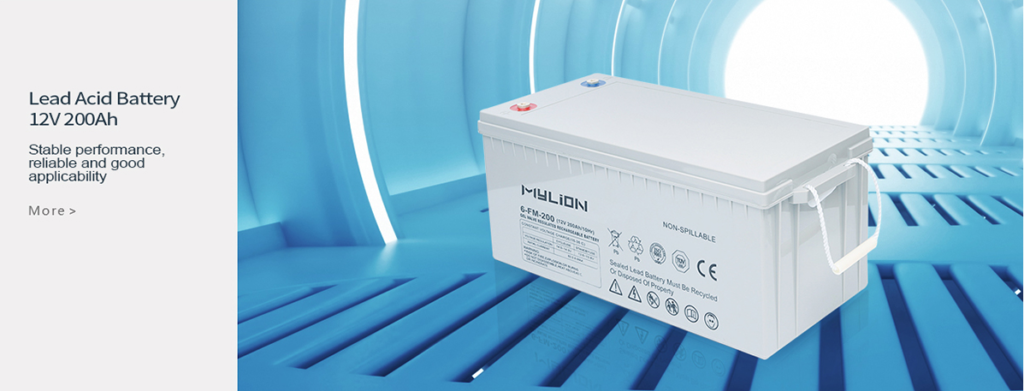
Compared with other battery metal materials, lead resources are relatively abundant, and lead reserves and recycled lead ensure the sustainable development of the lead-acid battery industry for a relatively long period of time. The shortcomings of lead-acid batteries are: low energy density and short cycle life, the main raw material lead is a kind of toxic substance, and there is a risk of lead pollution during battery production and recycled lead processing. Poor management may cause damage to the environment and human health. harm.
With the breakthrough of new technologies and the application of new structures, the continuous advent of advanced lead-acid batteries such as lead-carbon batteries, bipolar batteries, and non-lead grid batteries has changed the problems of low mass-energy ratio and short cycle life. And with the gradual improvement of laws and regulations and the improvement of management level, the risk of lead pollution can also be prevented and controlled. It has injected new vitality into the sustainable development of the lead-acid battery industry. In the future, lead-acid batteries will still play an important role in applications such as backup power, energy storage, starting, and power.
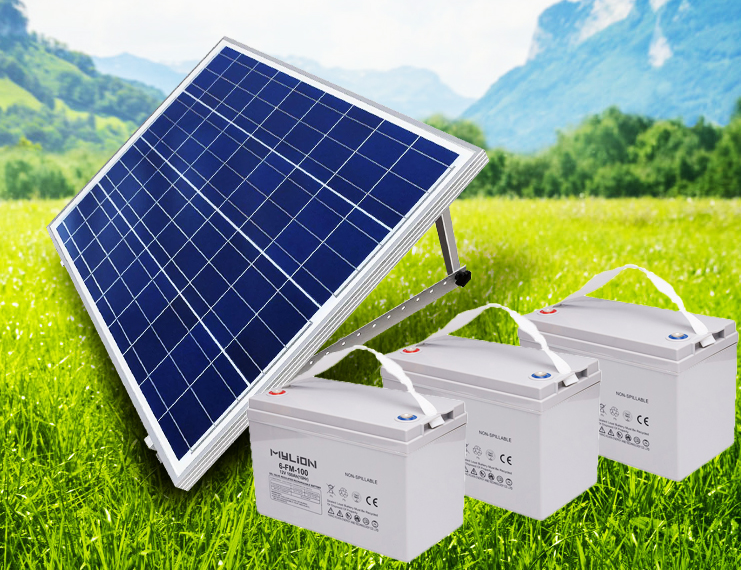
- Comparative advantages of lead-acid batteries
- Comparative advantage in performance
At present, the large-scale industrialized secondary batteries mainly include lead-acid batteries, nickel-cadmium batteries, nickel-hydrogen batteries and lithium-ion batteries. Cadmium-nickel batteries contain the highly toxic element cadmium, which has been gradually replaced by other batteries. At present, the most widely used batteries on the market are lead-acid batteries, lithium-ion batteries and nickel-hydrogen batteries.
Compared with other secondary batteries, lead-acid batteries mainly have the following comparative advantages:
A. The battery with the longest industrial production time and the most mature technology has stable, reliable performance and good applicability;
B. Dilute sulfuric acid is used as the electrolyte, which is non-flammable, and the battery is designed with normal pressure or low pressure, with good safety;
C. High operating voltage and wide operating temperature range, suitable for high-rate discharge applications such as hybrid electric vehicles (HEV);
D. It can be used for floating charging, with excellent shallow charging and shallow discharging performance, suitable for uninterruptible power supply (UPS), new energy energy storage, grid peak shaving and valley filling and other fields;
E. The large-capacity battery technology is mature and can be made into batteries of thousands of ampere hours, which provides convenience for large-scale energy storage.
- Comparative cost advantage
Lead-acid batteries are the cheapest secondary batteries, and the price per unit of energy is about 1/3 of that of lithium-ion batteries or nickel-hydrogen batteries. In addition, the main components of lead-acid batteries are lead and lead compounds. The lead content is as high as more than 60% of the total battery mass. The residual value of used batteries is high, and the recycling price exceeds 30% of new batteries. lower.
3. Recycling comparative advantage
Lead-acid batteries have simple composition, mature regeneration technology, and high recovery value. They are the easiest batteries to achieve recovery and recycling. The global production of recycled lead has exceeded the production of primary lead. The reuse rate of lead from waste lead-acid batteries in the United States has exceeded 98.5%, and the reuse rate of waste lead-acid batteries in my country has also reached more than 90%. Nickel-cadmium batteries, nickel-hydrogen batteries, and lithium-ion batteries are mostly small batteries with complex compositions, high regeneration costs, and difficulty in recycling, making it difficult for the regeneration industry to achieve market-oriented operations. At present, the global average recycling rate of the aforementioned batteries is less than 20%, especially for lithium-ion batteries, and most countries have not yet achieved effective recycling and regeneration.
- Insufficiency of lead-acid batteries
- Low energy density
The quality and volumetric energy density of traditional lead-acid batteries are relatively low, and the energy density is only about 1/3 of that of lithium-ion batteries and about 1/2 of that of nickel-hydrogen batteries, and the volume is relatively large, which is not suitable for light weight and small volume. use. In the future, there is still much room for improvement in the energy density of lead-acid batteries, especially lead-acid batteries using new materials and technologies such as carbon foam.
Comparative advantages and disadvantages of lead-acid batteries
2.The cycle life is short
The cycle life of traditional lead-acid batteries is short, and the theoretical cycle number is about 1/3 of that of lithium-ion batteries. There is still a lot of room for improving the cycle life of lead-acid batteries, especially lead-acid batteries with new materials, new structures and new technologies, such as bipolar lead-acid batteries, lead-carbon batteries, etc.
3.There is a risk of lead pollution in the industrial chain
Lead is the main raw material of lead-acid batteries, and lead accounts for more than 60% of the battery quality. The global lead-acid battery consumption accounts for more than 80% of the total lead consumption. Lead is a heavy metal, and the lead-acid battery manufacturing industry chain (including primary lead smelting, battery manufacturing, battery recycling, and secondary lead smelting) has a high risk of lead pollution. Poor management will cause environmental pollution and harm to human health.
4. Lead-acid batteries and environmental protection
Lead-acid battery manufacturing is the main industry that uses lead. Its industrial chain has lead pollution risks in primary lead smelting, battery production, waste battery recycling, and secondary lead smelting, but lead pollution in the entire process of the industry chain can be effectively controlled. The technology of lead pollution prevention and control is relatively mature. There are complete sets of technology and equipment related to primary lead and secondary lead smelting in foreign countries. The domestic lead smelting technology is basically mature, including the manufacture of lead-acid batteries, as long as advanced environmental protection equipment is configured according to specifications , the normal operation of environmental protection equipment, basically will not cause the occurrence of lead pollution incidents. In the field of lead-acid battery manufacturing, advanced cleaning, automation, and mechanized production equipment, as well as advanced environmental protection technology and equipment, have been widely used, so that lead fume, lead dust, and lead compounds in water have been effectively treated, and lead pollution has been effectively controlled. .
Advanced production processes include: one-furnace multi-machine grid casting process, lead ingot cold cutting technology, automatic wrapping and brushing, internalization process, etc. Advanced environmental protection processes include: high-efficiency pulsed lead dust processor, multi-stage wet lead fume processor, alkali mist spraying acid mist processor, wastewater reuse system, etc. The frequent occurrence of lead pollution incidents in my country in the past was mainly caused by the imperfection of relevant regulations and policies and insufficient management of the whole process.
It is mainly manifested in five aspects:
One is disordered competition among smelters, especially small smelters and illegal smelters, in order to compete for the market at low prices, adopt the method of local smelting, without environmental protection facilities or the facilities are not operating normally; even some large smelters are in order to reduce cost, there is a phenomenon of non-standard environmental protection governance, resulting in the occurrence of pollution incidents of primary lead enterprises.
Second, there are a large number of small factories in the lead-acid battery manufacturing industry, and their production equipment is outdated and cannot be equipped with complete and advanced environmental protection equipment and sanitary protection facilities, which is not conducive to environmental protection and resource utilization.
Third, the recycling of lead-acid batteries is completely in a state of unorganized recycling, which is an important link that causes lead and acid pollution.
Fourth, a large number of waste batteries flow to small regenerated lead factories, and the management of links is out of control, resulting in frequent environmental pollution incidents.
Fifth, there is a risk of cadmium pollution in power lead-acid batteries.
The United States is also one of the largest producers of lead-acid batteries in the world, with an annual lead consumption of more than 2 million tons. Due to sound regulations and effective measures to control lead pollution, a closed-circuit cycle of lead use has been realized, starting from primary lead smelting, battery manufacturing, and secondary lead smelting. “From life to death” tracking, producers, transporters, operators, product owners and governments at all levels “share their respective responsibilities”, so that lead pollution in the lead-acid battery industry chain has been effectively controlled.
In recent years, with the gradual promulgation and strict implementation of relevant domestic regulations and industry policy norms, the environmental awareness of lead-acid battery enterprises has gradually increased, and the pollution control technology has been continuously improved. Lead pollution of major enterprises in the industry has also been effectively prevented. In particular, through the industry access inspection, industry standard condition inspection, and industry environmental protection inspection organized by the Ministry of Industry and Information Technology and the Ministry of Environmental Protection, the environmental protection status of industry enterprises has been significantly improved. Compared with other harmful metals, lead pollution is controllable and preventable, and lead poisoning can also be cured. A certain degree of lead poisoning or blood lead exceeding the standard can be reversed, and can be recovered through diet therapy and drug regulation.



